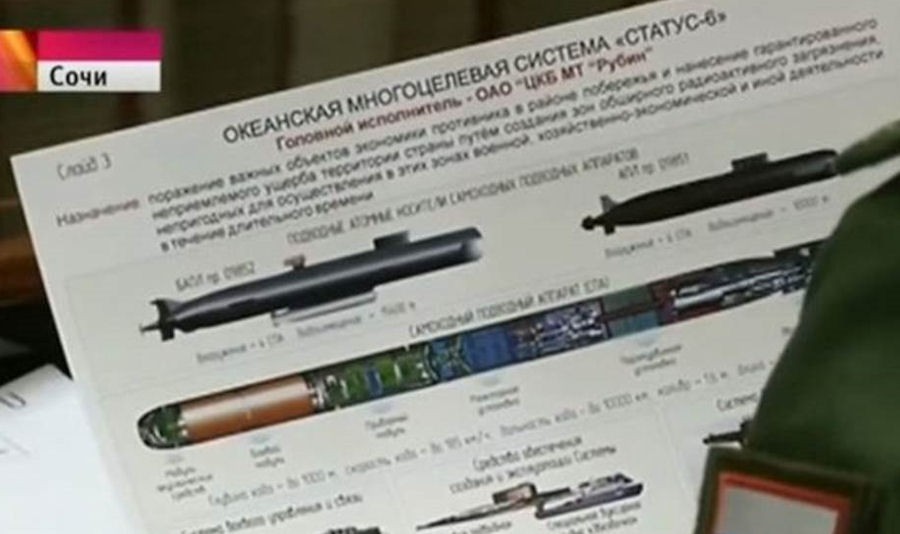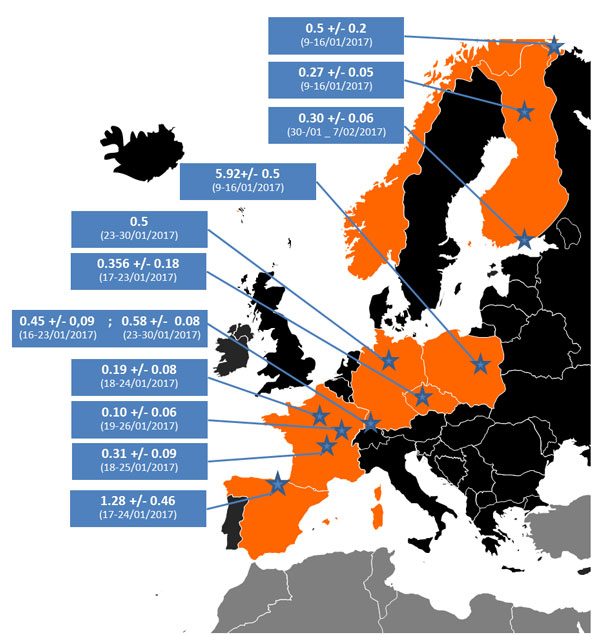But, the Trump administration is leaving yet one major piece of business undone and that is UNRWA.
This Palestinian refugee claims that even though UNRWA was created in order to help Palestinian refugees, UNRWA hires foreigners and some of them earn wages that are high enough to support 20 local Palestinians: “An UNRWA employee can earn $10,000 per month. Others earn more. They have luxury cars and apartments. Some have villas for free. Meanwhile, local Palestinian teachers hired by UNRWA earn $700 to $800 per month. The people from abroad get 10 times more. The more the refugees suffer, these people live a more luxurious life. I blame them for me being a refugee.” Read more here.
To see how much money the United States gives to UNRWA, go here. It is a chart of the top donors as of December 31, 2016. See where that money allegedly goes exactly and why by clicking here.
 UNESCO photo
UNESCO photo
Primer:
Economist: IT MUST have felt like déjà vu for Rami Hamdallah, the Palestinian prime minister, as he crossed the heavily-fortified border into Gaza on October 2nd. It was his first visit in two-and-a-half years. There were speeches, rallies and lofty promises to end the schism that has paralysed Palestinian politics for more than a decade. It was like a replay of a trip he made in 2014 to inaugurate a new unity government— which fell apart within weeks.
The Palestinian territories split in 2007, a year after Hamas, the militant Islamist group, won a majority in parliament. It seized control of Gaza after months of bloody fighting with its nationalist rival, Fatah. Since then Hamas has run the coastal strip as a separate fief, with its own civil servants and police. The two parties have signed six reconciliation deals meant to end the split, but none held. Hamas was loth to give up its enclave.
Now it seems more amenable. It has agreed to cede control of the civilian ministries in Gaza. Over the coming year it will add 3,000 police officers from the Palestinian Authority (PA), which runs the West Bank and is dominated by Fatah. Yahya Sinwar, Hamas’s number two, said he would “break the neck” of anyone who opposes reconciliation. (That may not be an idle threat: in the 1980s his job was to kill Palestinians who collaborated with Israel.)
Hamas has few alternatives at this point. Life in Gaza has been grim for a decade, amid three wars and a blockade imposed by both Israel and Egypt. Conditions worsened further this spring when Mahmoud Abbas, the Palestinian president, slapped his own sanctions on the territory to press Hamas into a deal. Most of Gaza’s 2m people receive just four hours of electricity a day. Tap water is equally scarce and when it is available it is brackish and polluted. Nearly two-thirds of young people cannot find work. In dingy, crowded hospitals, basic medicines are in short supply. Hamas is keen to put someone else in charge of the misery.
So are regional powers. Qatar, the main sponsor of Hamas, is under embargo by Egypt and three of its Gulf neighbours, which want the emirate to cut ties with Islamists. It has not halted aid to Hamas, but it has quietly urged the group to reconcile with Fatah. The United Arab Emirates has dangled the prospect of massive investment in a post-Hamas Gaza. It is working closely with Muhammad Dahlan, an ex-Fatah security boss who was banished by Mr Abbas and now lives in Abu Dhabi.
The greatest pressure has come from Egypt, which controls Rafah, the sole border crossing accessible to most Palestinians. It has been largely closed since 2013. Egypt accuses Hamas of working with jihadists who are fighting a bloody insurgency in Sinai. Though the charges are exaggerated, Hamas has indeed allowed dozens of wanted Egyptian militants to seek refuge in Gaza. The generals in Cairo would be happy to see Mr Abbas’s men back on the border.
Hamas has not agreed to that. It may let Mr Abbas run the schools and hospitals, but it will not give up a militia that boasts tens of thousands of fighters and a cache of rockets. “This will never be up for discussion,” says Moussa Abu Marzouk, a top Hamas official. So this effort is likely to fail for the same sorts of reasons as the past six. Mr Abbas cannot accept a well-armed group operating under his nose. It would be a threat to the unpopular president’s tenuous rule.
It could also bankrupt his government. Israel would probably withhold the tax revenue on which the PA depends, and some Western countries might suspend foreign aid. “If someone from Hamas has a weapon, I’ll put him in prison,” Mr Abbas told Egyptian television. He may not get the chance.
***
The State Department on Thursday announced America’s withdrawal from the United Nations Educational, Scientific and Cultural Organization. As with everything that President Trump does, the move provoked journalistic anger and agony. Prepare for years of sob stories about UNESCO heritage sites neglected and aspiring developing-world scientists unfunded, all due to Trumpian unilateralism.
Yet this was a sound and overdue step that will help advance peace and U.N. reform.
In its statement, the State Department cited “continuing anti-Israel bias” at UNESCO, among other things. The Paris-based agency is far from the only U.N. outfit to single out the Jewish state for opprobrium. But UNESCO’s anti-Israel stances have been egregious even by this global body’s debased standards, especially since 2011. That was the year the Palestinian Authority sought and won admission to UNESCO as a full member-state. As Jonathan Schanzer of the Foundation for Defense of Democracies told me, “The Palestinians targeted UNESCO early as part of their Palestine-194 strategy”–the PA effort to win recognition as a state in U.N. halls rather than through talks with Israel. “UNESCO has played a role in this strategy, and it isn’t done yet.”
The Obama administration denounced the PA’s admission, with then-State Department spokeswoman Victoria Nuland calling it “regrettable, premature” and harmful to “our shared goal to a comprehensive, just and lasting peace.” Washington cut off American dollars for UNESCO under a Bill Clinton-era law that prohibits the U.S. government from funding any U.N. agency that admits a non-state as a member. American funding, once accounting for more than one-fifth of UNESCO’s budget, hasn’t been restored since 2011. The agency has lost out on some $600 million as a result.
UNESCO only doubled down on its anti-Israel agitation in the years that followed, however, passing a raft of resolutions that denied the Jewish (and Christian) connection to Jerusalem and other holy sites in Israel.
A resolution on Jerusalem passed in May described Israel as the “occupying power,” denying the Jewish state’s claim to its own capital. Another Jerusalem resolution, approved last year, referred to the Western Wall and the Temple Mount by their Muslim names only. The agency thus attached the U.N.’s name to the odious Arab project to de-Judaize the City of David. That move prompted then U.N. Secretary-General Ban Ki-moon to distance himself from “any perceived undertaking to repudiate the undeniable common reverence for these sites.” Even UNESCO’s left-leaning chief, Irina Bokova, criticized the text.
Yet anti-Israelism and–it must be said–anti-Semitism are part of UNESCO’s diplomatic culture. When, in July this year, Israel’s ambassador to UNESCO called for a minute of silence for Holocaust victims, Cuba’s envoy objected: “Only the Chair can request a minute of silence. So with your indulgence, let me request Mr. Chairman, that we stand for a minute of silence for all of the Palestinians who have died in the region.” Footage of the scene, available on the website of the indispensable U.N. Watch, shows numerous delegates standing up and clapping in favor of the Cuban motion.
It was this black record that impelled the Trump administration to withdraw from UNESCO. The decision, by the way, is not without precedent. President Carter withdrew the U.S. from the International Labor Organization for three years and didn’t rejoin until the ILO took steps to reform itself. The Reagan administration in 1983 pulled the U.S. out of UNESCO over its “hostility toward the basic institutions of a free society.” President Reagan was worried about a creepy UNESCO proposal to have the agency and its authoritarian members license and regulate foreign reporters. Washington returned to UNESCO in 2002, under George W. Bush.
By withdrawing from UNESCO (once more), the Trump administration is sending an important message to the U.N. mandarins: that America doesn’t have infinite patience for international institutions that function as platforms for Jew-hatred. Long before Donald Trump came on the scene, that used to be a bipartisan American position.






